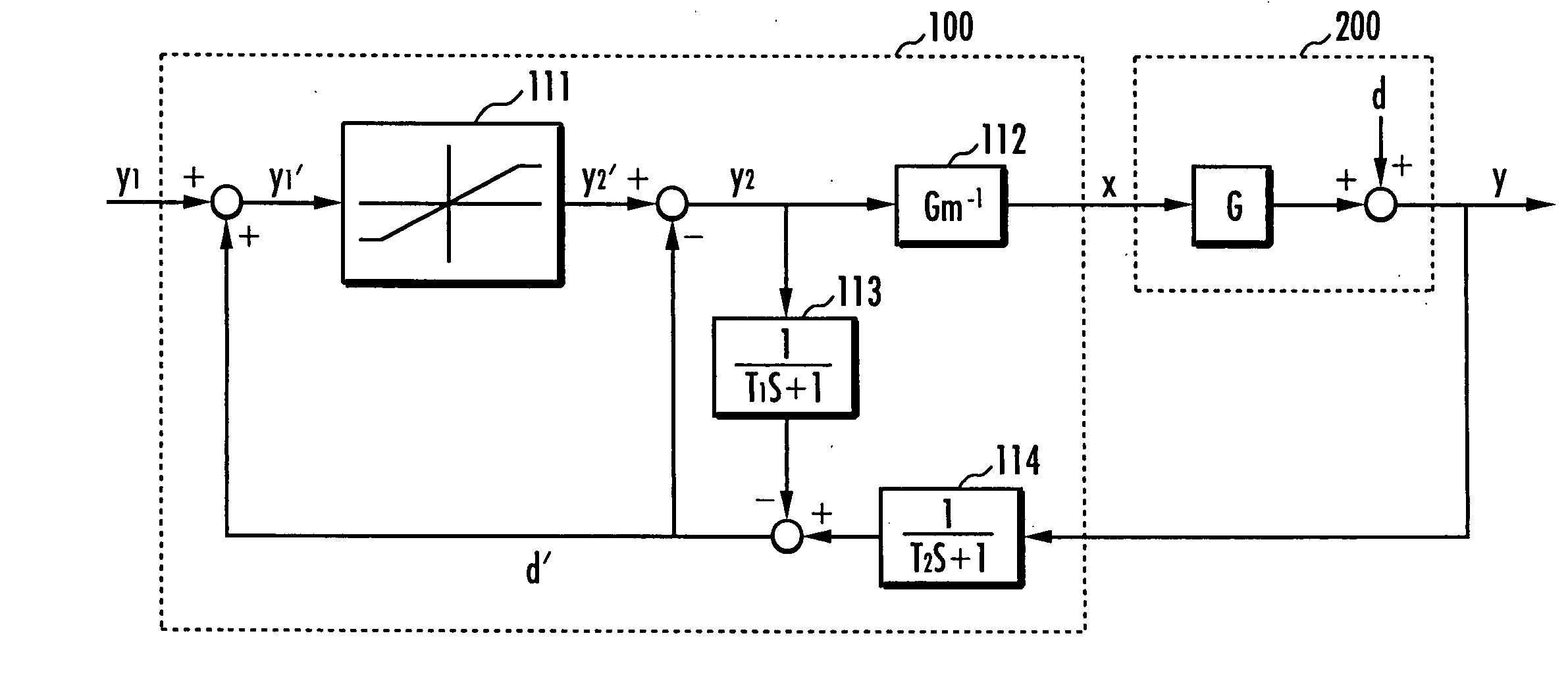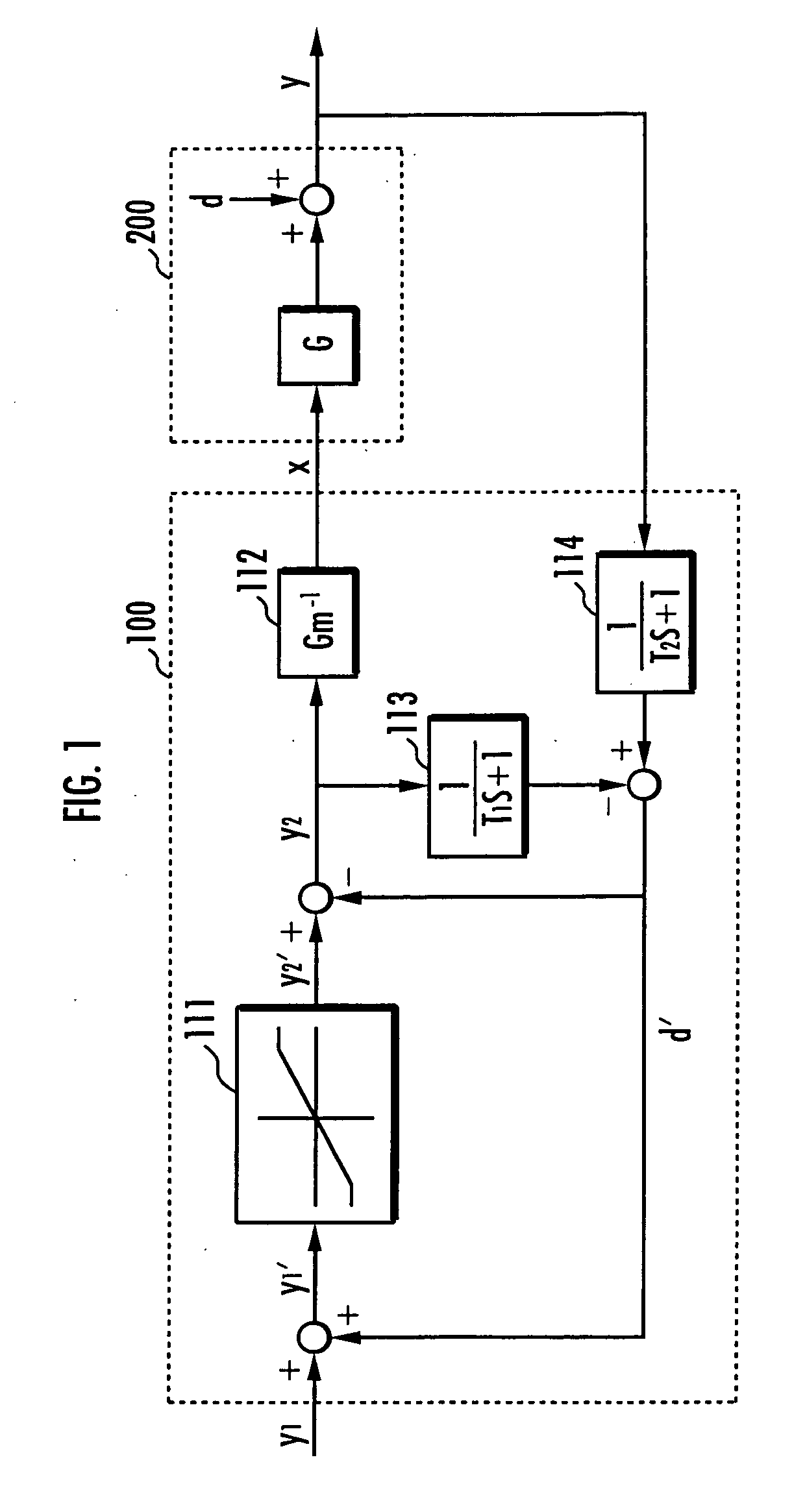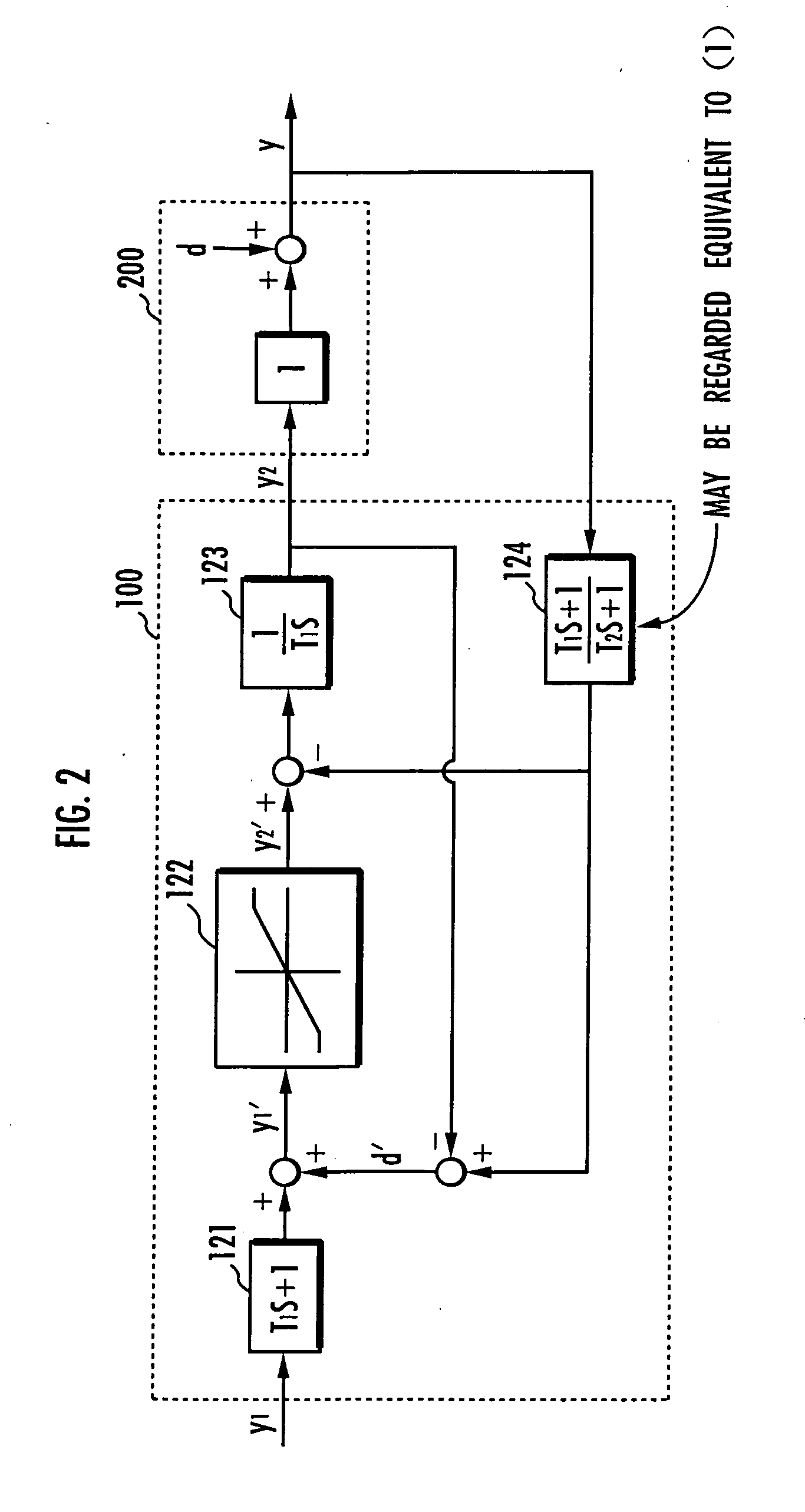Control system
a control system and control system technology, applied in the field of control systems, can solve the problems of deteriorating control accuracy, out of the allowable range of control variable y, unstable feedback loop, etc., and achieve the effect of accurate and stably controlled
- Summary
- Abstract
- Description
- Claims
- Application Information
AI Technical Summary
Benefits of technology
Problems solved by technology
Method used
Image
Examples
first embodiment
[0050] First, a control system according to the present invention will be explained in conjunction with FIG. 1 through FIG. 7.
[0051] A control system 100 according to a first embodiment shown in FIG. 1 is equipped with a limiter 111, an inverse model arithmetic unit 112, a first filter 113, and a second filter 114. The control system 100 controls a control variable y of a controlled object 200 on the basis of a manipulation variable x.
[0052] The limiter 111 constitutes a “secondary estimating means” and determines and outputs a secondary estimation value y2′ according to an input primary estimation value y1′ on the basis of a mapping function (refer to FIG. 7(a)) represented by an expression (1) given below:
y2′=y1′ (if y−≦y1′≦y+)
y+ (if y+1′)
y− (if y1′−) (1)
[0053] More specifically, if the primary estimation value y1′ is within an allowable range [y−, y+], then the limiter 111 determines the secondary estimation value y2′ that agrees with the primary estimation value y1′. If th...
second embodiment
[0080] Referring now to FIG. 2, a control system according to the present invention will be explained.
[0081] A block diagram of a control system 100 according to the second embodiment shown in FIG. 2 is an equivalent modification of the block diagram of the control system 100 according to the first embodiment shown in FIG. 1, and can be approximated to T1 s to 0 in the low frequency range. Hence, the block diagram of the control system 100 according to the second embodiment can be obtained by going through approximate modifications to (primary lead filter of a time constant T1)*(limiter) before and after (limiter)*(primary lead filter of time constant T1 (transmission element T1 s+1)).
[0082] From the relationship Gm−1·G≦1 of expression (2), the inverse model arithmetic unit 112 in the control system 100 according to the first embodiment is omitted, and the transmission element of a controlled object 200 is set to 1.
[0083] The control system 100 according to the second embodiment s...
third embodiment
[0099] Referring now to FIG. 3, a control system according to the present invention will be explained.
[0100] A block diagram of a control system 100 according to the third embodiment shown in FIG. 3 is obtained by assuming that the time constants T1 and T2 of the first filter 113 and the second filter 114 share the same time constant T as that in the control system 100 according to the first embodiment shown in FIG. 1, and combining the two filters 113 and 114 into one filter.
[0101] The control system 100 according to the third embodiment is equipped with a limiter 131, an inverse model arithmetic unit 132, and a filter 133.
[0102] The limiter 131 and the inverse model arithmetic unit 132 share the same constructions as those of the limiter 111 and the inverse model arithmetic unit 112 in the control system 100 according to the first embodiment. The filter 133 is a primary lag filter of time constant T.
[0103] The control system 100 according to the third embodiment determines the ...
PUM
 Login to View More
Login to View More Abstract
Description
Claims
Application Information
 Login to View More
Login to View More - R&D
- Intellectual Property
- Life Sciences
- Materials
- Tech Scout
- Unparalleled Data Quality
- Higher Quality Content
- 60% Fewer Hallucinations
Browse by: Latest US Patents, China's latest patents, Technical Efficacy Thesaurus, Application Domain, Technology Topic, Popular Technical Reports.
© 2025 PatSnap. All rights reserved.Legal|Privacy policy|Modern Slavery Act Transparency Statement|Sitemap|About US| Contact US: help@patsnap.com



